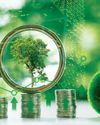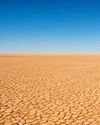
As City Streets Turn into Rivers
As early as the civilizations of Harappa and Indus Valley, societies have been cognizant of drainage systems for both sanitation and flood-prevention reasons. Leading water to the outskirts of the cities through an impeccable feat of engineering, the ancient cities of Lothal and Mohenjodaro thrived and demonstrated in their city planning world’s earliest drainage systems including underground sewage systems and the magnificent great baths—a fine example of proper water supply, rainwater harvesting, and water drainage systems.
Compared to these, the efficiency of the current water systems has seen a downward slope which can be related to the rapid urbanization that has undermined the sustainability of the environment. The mismanagement of water-related infrastructure and the problems faced because of it have led to a peculiar predicament of flooding in urban areas, that is, ‘urban flooding’ where the roads and surrounding areas get inundated with water.
Urban flooding can be connected to two major reasons: poor infrastructure and maintenance, coupled with rapid climate change. This year’s flooding made Delhi the Venice of India as amid these heavy spells of rainfall, several parts of Delhi had been well submerged in water. Improper road construction greatly contributes to these floods as drains across the city are often constructed at heights higher than the ground level negating their purpose. To make it worse, newer roads are impervious to water. Mismanagement of plastic waste can also be seen as a cause of urban flooding, given how it chokes the drains in turn exacerbating the problem.
This story is from the August - September 2023 edition of TerraGreen.
Start your 7-day Magzter GOLD free trial to access thousands of curated premium stories, and 9,000+ magazines and newspapers.
Already a subscriber ? Sign In
This story is from the August - September 2023 edition of TerraGreen.
Start your 7-day Magzter GOLD free trial to access thousands of curated premium stories, and 9,000+ magazines and newspapers.
Already a subscriber? Sign In

Mapping Flames Leveraging Remote Sensing and GIS for Forest Fire Prevention
Leveraging Remote Sensing and GIS for Forest Fire Prevention

Sustainability Practices and Their Significance in the Nutraceutical Industry
In this interaction with TerraGreen, Karthik Kondepudi, Partner, Herbochem, enlightens us on the significance of nutraceutical industry and how it could make noteworthy contributions towards mankind's quest towards sustainable development.

Why Aspiring Marketers Must Embrace Marketing Sustainability Practices?
A Snapshot of the Global Rising Trend

When Men and Mountain Meet Confluence of Unsustainable Tourism and Unsustainable Business
With this article, Rajshekhar Pant, makes us aware of the threats mountains are receiving as an outcome of the unsustainable development practices. He exerts that the inappropriate development despite taking a big toll, has blinded both the high-ups and commoners to such an extent that no one wants to say that tourism also brings trouble as long as it serves the purpose—need of the visitors and greed of the locals.

Art from Electric Trash
A New Dimension to the Sustainable Development

COP29 Key Outcomes and Challenges
This article by Arvind Kumar brings to us the major takeaways from the COP29. The author establishes how climate finance is the prerequisite for the effective realization of the ambitious climate action.

Future of Climate Change Negotiations Emerging Clues from the COP29
This article penned by Dr Vibha Dhawan and Mr R. R. Rashmi highlights the major takeaways of the recently concluded COP29. It serves the dual purpose of both light and sight. The authors' unbiased analysis reinforces our comprehension of the shortcomings of the environment summit that gave rise to the consequential outcomes. They opinethe most relevant COP in the coming years will be the COP 2028. As India has proposed to host the COP in 2028, it will have to play a decisive role not only in shaping the character of emerging global governance of climate change, but also in bringing together the international community against the climate change.

From Coastal Hamlet to International Port The Time Tells a Tale
This article by Gajanan Khergamker makes us co-passengers in the journey of Karanja Port. Earlier neglected and insignificant, Karanja, with its deep harbour, abundant land, and proximity to Mumbai, emerged as a viable solution in the government's quest for another port in Mumbai's vicinity. This marked a new beginning for the coastal fishing community.

New Research Drought Impacts on Wildlife Can Inform Conservation Strategies
A new research has established that many wildlife species will face much more frequent and severe droughts in the future. By 2050-80, year-long droughts could happen almost five times as often, and three-year droughts almost seven times as often compared to past decades. These changes will require animals to adapt significantly. Scientists have identified areas with high biodiversity and high risk that can help managers focus attention for conservation efforts. The south-western US is a critical area where many species will be more affected by increased droughts.

The Cooling Paradox How Our Quest for Comfort Fuels Climate Change?
This article written by Shaurya Anand sheds light on the urgency of striking a balance between energy generation, energy consumption, and environment when it comes to meeting our cooling needs. The author guides us how our dependency on cooling equipment fuels climate change and what solutions we can explore for a cooler and greener future.